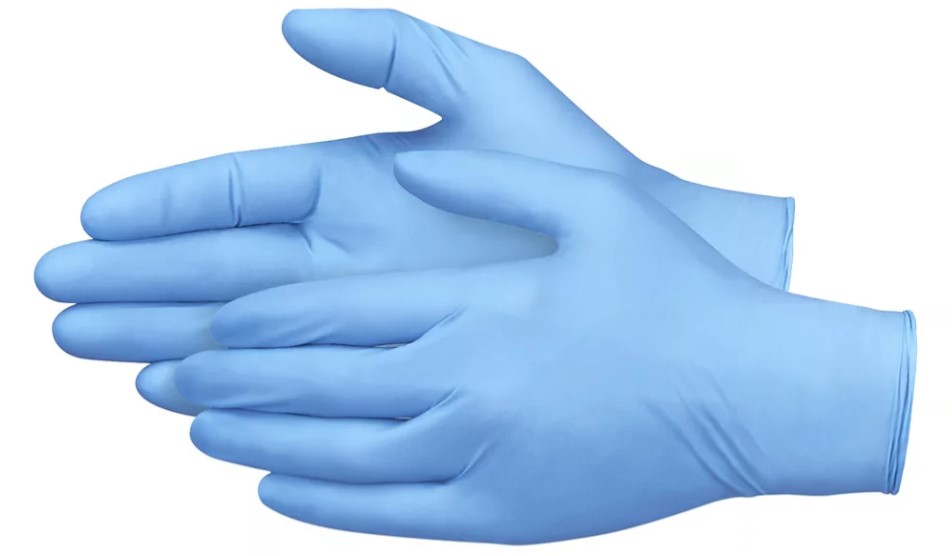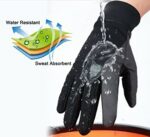Powdered gloves had dominated the food industry and the medical sector for decades, before 2016. In 2016, the FDA banned the use of powdered gloves and many countries adopted the practice. Since then, it’s powder-free gloves that have become more popular.
Powder-free gloves are better because, unlike their powdered version, they don’t have cornstarch. The absence of cornstarch powder has the following benefits:
-
-
- Powder-free gloves don’t cause skin irritation even if they’re worn for long hours.
- These gloves don’t cause allergies to asthmatic people.
- There’s no residue buildup.
-
These are but a few reasons why powder-free gloves are better than powdered gloves.

This article sheds light on some of the major differences between powdered and powder-free gloves, types of powder-free gloves, and more!
Keep reading for all details!
Which gloves are better powdered or non-powdered?
Both powdered and powder-free gloves have pros and cons (to be discussed in a later section in this post). Despite that, the FDA insists on using powder-free gloves, especially in the food industry and medical sector.
It’s because of the fact that powder-free gloves are safer for health that they’re preferred over powdered gloves.
It’s not just the FDA that mandates the use of powder-free gloves in the medicine and food industries, National Sanitation Foundation (NSF) also recognizes the threat that the powdered gloves pose.
Similarly, there are many safety agencies globally that have recognized and accepted the health risk of powdered gloves.
Hence, despite being more expensive than powdered gloves, powder-free disposable gloves are better and safer options.
Powder-free gloves Vs Powdered: 4 key differences
Powdered gloves had dominated almost every sector for decades. That’s why, despite their potential risks being realized globally, some people still advocate their use.
Hence, we’ve made this comparative analysis between powdered and powder-free gloves so that you can see for yourself which of the two is better.
Dive in!
#1. Safety and health risks
Cornstarch is the culprit that dethroned powdered gloves. There are many potential health risks that powdered gloves have.
Skin allergies and breathing troubles are the two major setbacks of wearing powdered gloves.
They’re completely ruled out as examination gloves because they pose a serious threat to not just the doctor wearing these gloves, but also the patient that’s being operated on or examined.
Similarly, chefs aren’t the ideal candidates for wearing powdered gloves either. The reasons are the same, threat to human health.
Powder-free gloves are first chlorinated then washed with water. Hence, they’re extremely safe for medical purposes and the food industry.
#2. Tensile strength
This is one of the reasons that people miss powdered gloves. They are stronger and really durable.
But, it’s a misconception that powder-free gloves are less strong than powdered gloves. Powder-free gloves are also strong. The only thing is that they’re one-time use disposable gloves.
Besides, if we compare the grip of the two, powdered gloves might have an edge over non-powdered gloves. That, however, doesn’t mean you’ll lose grip on your scalpel or tools if you’re wearing powder-free gloves.
There are rigged powder-free gloves too. You can use them for added grip. Similarly, there are other textures available too. You can pick any depending upon the nature of your job.
#3. Ease of use
Cornstarch helps the powdered gloves easily slide onto the hands. They are equally easy to remove too.
The powder-free gloves, on a comparison, are tougher to remove. Yet, it’s not advised to replace them with powdered gloves in high-risk sectors where health is at stake.
#4. Cost and affordability
Again, it’s powdered gloves that are less expensive. This is the leading reason that many industries where powdered gloves are not officially banned still use them.
So, which of the two wins the race, powdered or powder-free?
You might want to believe that powdered gloves steal the race because they earn the cookie points for being less expensive and more durable, but the truth is quite the opposite.
The health risks that powdered gloves pose aren’t minor. And that’s why despite powder-free gloves being costly, they’re still better.
6 Advantages of Powder free gloves
Powder free gloves are quite popular (and super-safe) for medical practitioners and their patients, chefs and their customers, and sanitation workers.
The 6 advantages that will convince you that using powder-free gloves is better (that is, if you’re still not convinced) are as follows.
1.) They don’t cause skin inflammation, irritation, or dryness.
2.) They don’t irritate the respiratory tract.
3.) Mechanics prefer using powder free gloves because they don’t leave behind residue. Hence, it’s easier to clean hands as well as the equipment after the work is done.
4.) Powder-free gloves offer protection from fats, oil, grease, and acids in food.
5.) They don’t pose the threat of contamination because, a) they don’t have cornstarch and b) they are chlorinated.
6.) They are available in many textures. Hence, if you require a stronger grip, you will have options to choose accordingly.
A quick recap of the pros and cons of powder-free and powdered gloves
Powdered gloves
Pros:
-
-
- They’re affordable.
-
Cons:
-
-
- They pose health risks.
- They cause skin allergies.
- They lead to contamination due to residue.
-
Powder free gloves
Pros:
-
-
- They don’t cause allergies.
- They are available in multiple textures.
- They don’t cause contamination.
- They don’t result in the buildup.
-
Cons:
-
-
- They are expensive.
-
FAQs
1. Why would you want powder free gloves?
Powder-free gloves have many advantages. They are especially a necessity in the food and medical industries.
They offer a good grip, don’t lead to contamination or skin and breathing allergies, and, most importantly, they don’t leave behind troubling residue.
2. What’s wrong with powdered gloves?
The only advantage of powdered gloves is that they’re less expensive. Otherwise, they have many problems. Out of the many, the biggest problems are:
-
-
- Contamination
- Skin allergies
- Breathing allergies in asthmatic people
- The serious residual accumulation that’s risky for patients
-
3. Why are powdered gloves banned?
As already mentioned, powdered gloves are serious health risks in the food sector and medical use. That’s why the FDA banned these gloves in 2016.
4. Are latex powder free gloves food safe?
The white-colored powder free gloves are safe as long as they’re used once. After one use, they should be disposed of.
Concluding Thoughts:
Powder free gloves are a lot better and a lot safer than powdered gloves. When handling food or medical instruments, cornstarch in powdered gloves causes contamination. It leads to many serious health problems.
On the other hand, powder free gloves are chlorinated instead of having cornstarch. Hence, they don’t lead to allergies. Besides, they don’t cause contamination.
We hope that you won’t let the lesser cost of powdered gloves persuade you into still using them. It’s FDA-approved powder free gloves that you should switch to.







